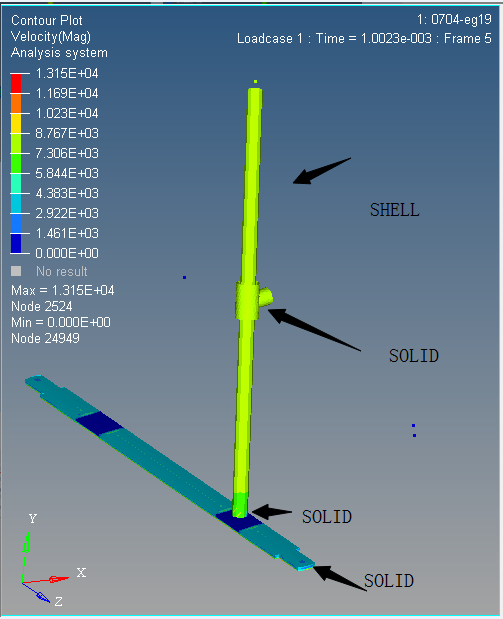Hi all,
I am working on 3 m landing gear drop test in radioss. The material is aluminum. I set it as M2. Partial model is listed blow. I cannot put the whole model due to confidential problem. I chose type 7 in self contact interface. I chose infinite plane as rigid wall, with a distance 10 mm from the bottom of landing gear. Then, I set initial velocity as -7500 mm/s along Z direction, calculate by v=(2gh)^(1/2).
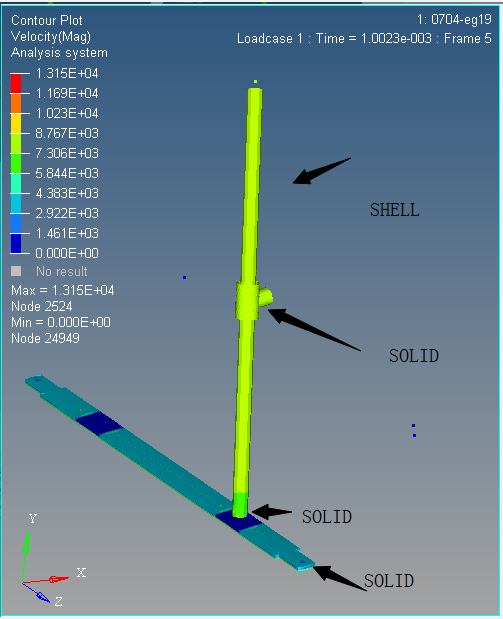
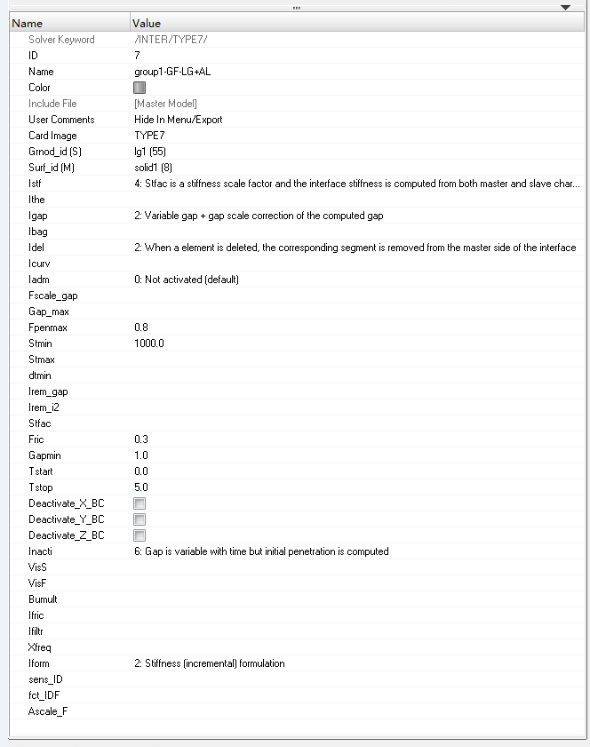
Now results confused me. In velocity, when the bottom of landing gear impact on ground, the velocity became slower, however, the top part did not stop, retaining 7500 mm/s velocity, even if the bottom part deformed. Results are listed blow.
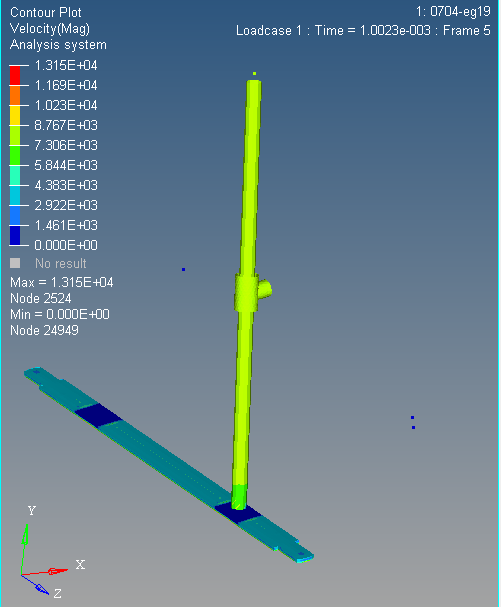
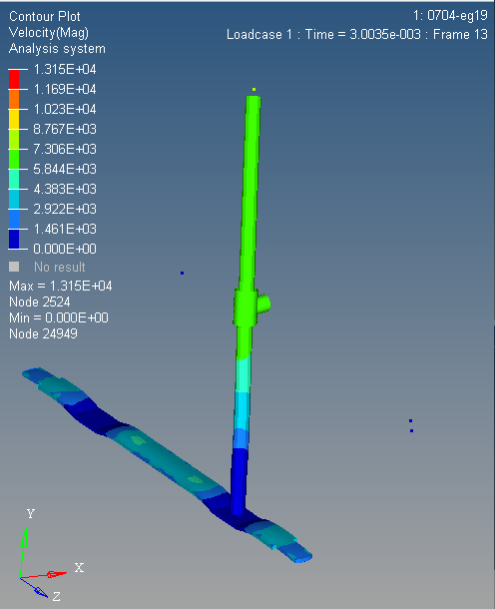
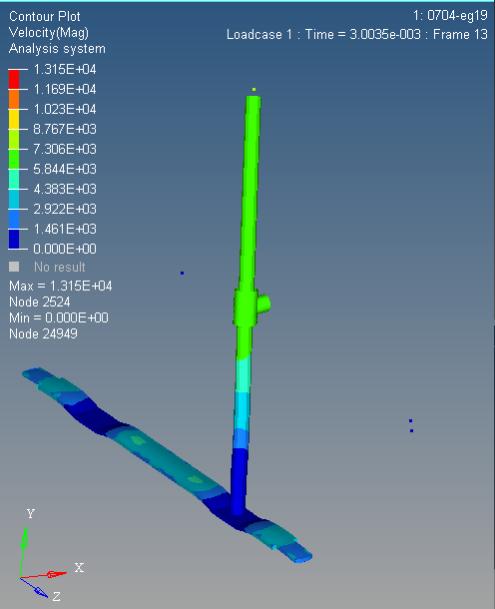
Is that right? Can anyone help me. Thanks in advance.
Regards,
ANQI
<?xml version="1.0" encoding="UTF-8"?>